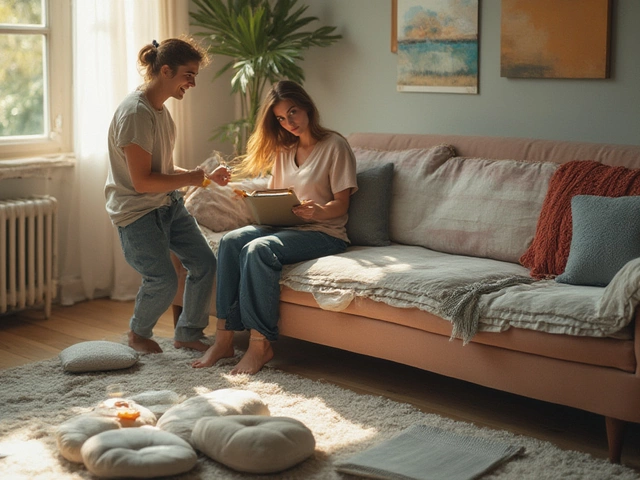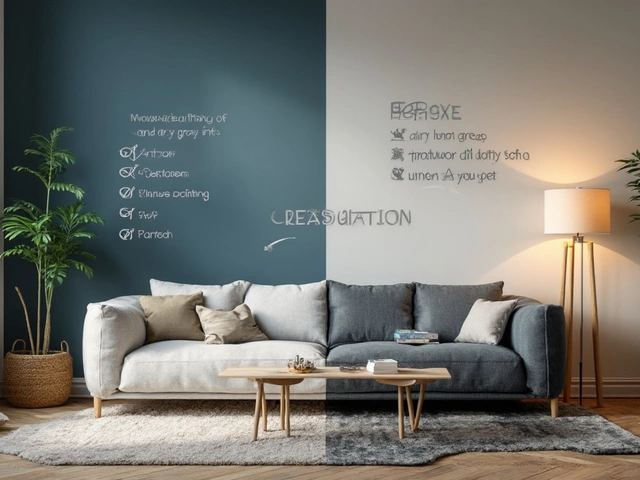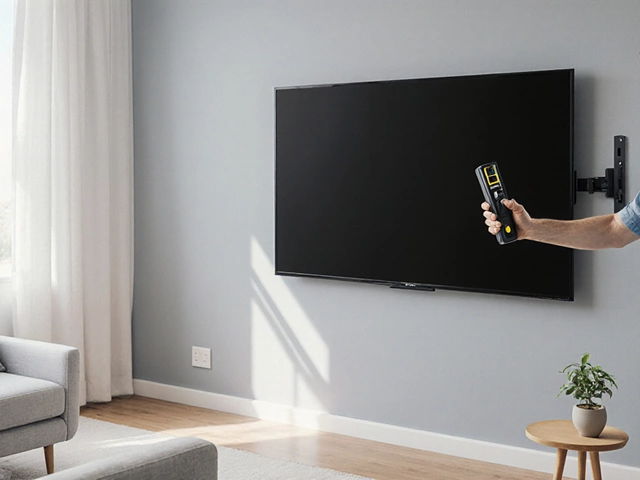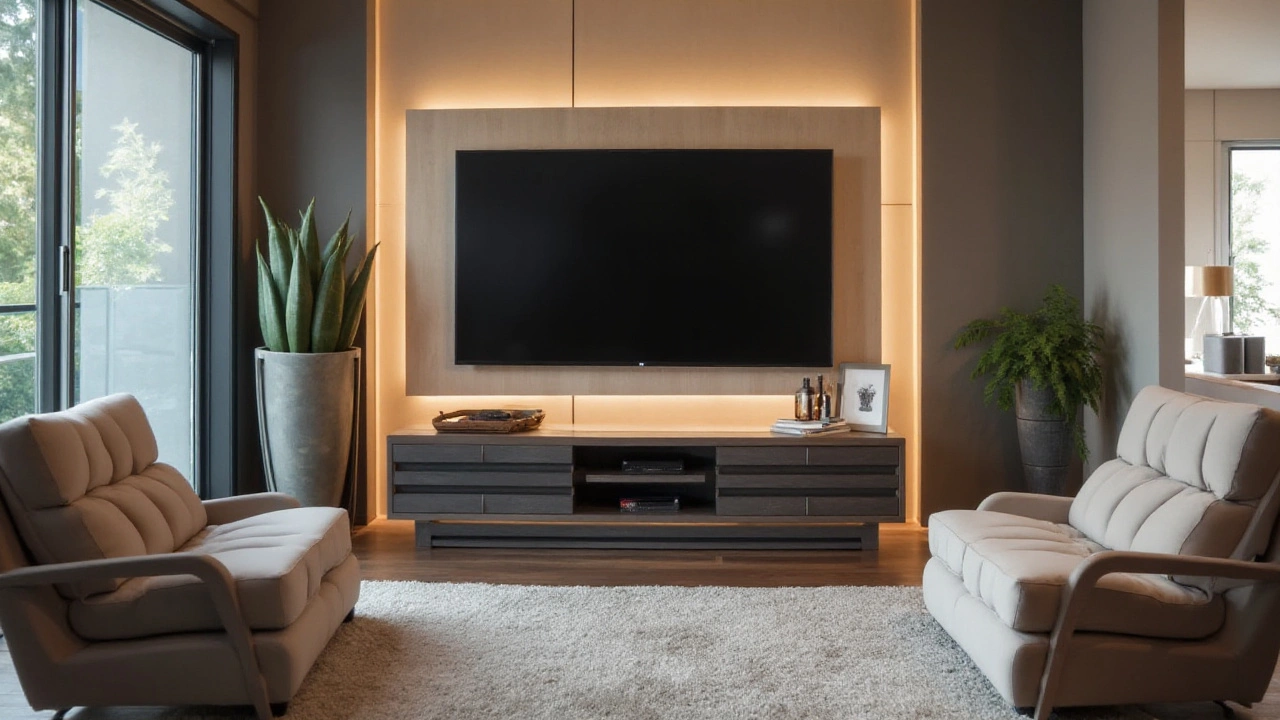
The height of your TV stand may seem like a minor detail, but it can significantly influence your viewing experience and the overall look of your living room. Many people find themselves questioning whether their television should sit high or low, and opinions can vary greatly. Setting up your TV at the correct height is not just about visual pleasure; it’s about creating a comfortable space that you and your family can enjoy.
Let’s dive into a detailed exploration of how the height of your television stand affects viewing comfort, design harmony, and practical use of your space to ensure you get the best from your entertainment setup.
- Understanding TV Viewing Ergonomics
- Impact of Room Dynamics
- Style and Design Considerations
- Practical Tips for Setup
Understanding TV Viewing Ergonomics
The concept of ergonomics often emerges in discussions about workplace setups, but it is equally relevant in our homes, particularly in relation to how we set up our televisions. Ergonomics, at its core, is about designing spaces and products to fit the user’s needs and comfort levels, which directly applies to determining the optimal height for your TV stand height. It’s important to recognize that watching TV has become a primary leisure activity for many, with statistics showing that the average person spends more than 3 hours daily in front of their television. This frequent usage makes it vital for your TV's positioning to support good posture and reduce strain on your neck and eyes.
When considering television setup, the ideal height should align the center of the screen with the natural line of sight of the average viewer. This typically translates to having the center of the screen at about eye level when you’re seated, which is roughly 42 inches from the floor for most people. In practice, however, this can vary depending on specific factors like the height of your seating or the distance from the TV to the seating area. Understanding these nuances helps to prevent common ailments associated with poor TV placement, such as neck and back pain. According to the American Chiropractic Association, maintaining a neutral posture is crucial for long-term spinal health.
Another important ergonomic consideration is the angle at which the TV is viewed. Ideally, viewers should sit directly in front of the TV without needing to turn their heads. If a room setup requires sitting at an angle to the TV, it's advisable to pivot the TV itself using an adjustable mount or stand. This is where adjustable TV stands or wall mounts can offer ergonomic flexibility, allowing for varied viewing angles and heights either for a single viewer or multiple members of the household. Remember that long periods of watching can affect your eyesight if not set up properly. The American Academy of Ophthalmology suggests taking regular breaks using the 20-20-20 rule: every 20 minutes, look at something 20 feet away for 20 seconds, which can also help you reassess whether your setup remains comfortable over time.
"Setting your TV at the proper height ensures a comfortable posture and reduces the stress on your neck and shoulders," advises Dr. Emily Rostock, a leading physiotherapist specializing in ergonomic design.
Beyond comfort, there’s also a psychological benefit to consider. An optimally placed TV can transform your living space into a relaxing retreat, perfect for unwinding after a hard day's work. By paying attention to ergonomic principles and incorporating them into your home decor, you can elevate your living room experience, turning it into a place where relaxation meets thoughtful design.
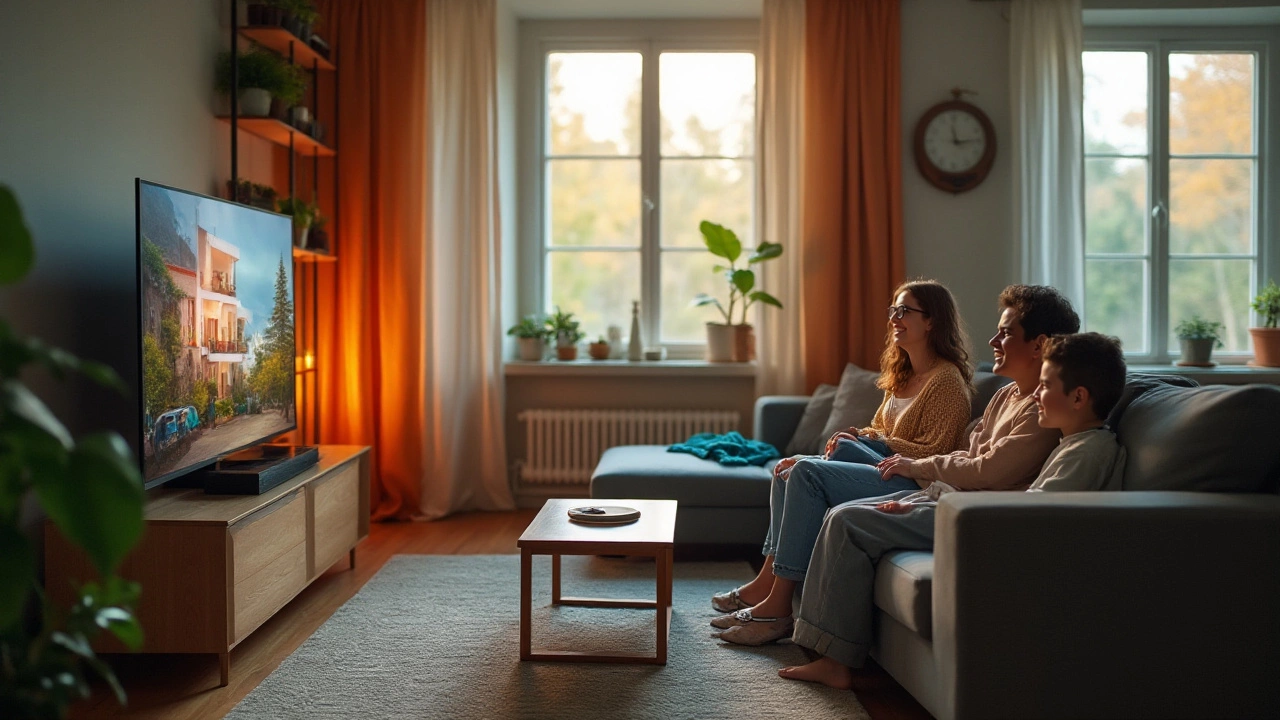
Impact of Room Dynamics
When it comes to setting up your TV stand, the dynamics of your room play a pivotal role in determining the optimal height for your television. Room dynamics refer to the various elements that influence how space is perceived and interacted with, including furniture arrangement, lighting, and the overall layout. Just as each space is unique, so too is the ideal TV height, which is often guided by the size of the room, the distance from the seating area, and how the room is used.
One critical aspect is the size and shape of the room, which can dramatically affect how high or low your TV should be. A living room with high ceilings might necessitate placing your TV higher on the wall to maintain visual balance, while a more compact space might benefit from a lower setup to avoid overwhelming the room. In wide rooms with multiple seating arrangements, a carefully measured height can ensure a cohesive viewing experience for everyone, echoing the importance of room proportions in achieving harmony.
Lighting is another element not to overlook. The natural and artificial lighting in the room can influence where you place your TV and its height. Sunlight hitting the screen might demand adjustments—not just in TV positioning but in its height, to minimize glare, which can interfere with viewing enjoyment. And when it comes to artificial lighting, placing your TV at a height that aligns with or counters the light sources can greatly enhance viewing quality.
"Optimal room arrangements often influence TV placement more than you would think," says renowned interior designer Emily Henderson. "By tailoring the TV height to your room's dynamics, you can actually make a smaller space feel more open and a larger space feel more intimate."
Consider also the primary use of the room. A den dedicated to relaxation and binge-watching might have different height requirements than an open-concept family room where activities vary, including hosting guests or playing games. If your room transitions between various functions, a flexible TV stand option might be a wise choice, allowing you to adjust the height as needed.
Moreover, acoustics in the room tie directly into where you set up your entertainment system. Wall-mounted speakers or soundbars are often positioned at specific heights for optimal sound distribution. Aligning your TV with these audio components can lead to an immersive viewing experience that most closely mimics a theatre setting. All these elements—furniture placement, acoustics, and multi-function usage—reinforce why a one-size-fits-all approach doesn't apply when deciding the height of your TV stand.

Style and Design Considerations
The aesthetic appeal of your living space often hinges on how well your television setup blends with the rest of your decor. One of the key factors to consider is the visual impact of your TV stand height. While some enthusiasts prefer the sleek look of wall-mounted televisions, leaving room for furniture flexibility, others cherish the classic elegance of a well-crafted piece of furniture holding their TV. When choosing a TV stand, it’s essential to consider the overall design theme of your room. For instance, a rustic wood stand could complement a farmhouse-style living area, while a minimalist metal stand might suit a modern urban apartment. Matching your TV stand with existing décor not only maintains harmony but also magnifies the character of the room.
Think about the balance between functionality and design. While a taller TV stand can make a room feel more formal, it might not be the best choice for spaces lacking in height, as it could overwhelm the room’s proportions. In contrast, a lower TV stand, although cool and relaxed in feel, might clash with the formality expected in a more traditional setting. It’s important to achieve a balance that maintains aesthetic cohesion while being practical. If you're working with a smaller room, choosing a stand that doubles as storage is a wise move. This ensures that cables, remote controls, and gaming consoles have their dedicated space without causing clutter.
If we take a page out of interior design principles, the concept of scale becomes crucial. The stand should complement the size of the TV without appearing too bulky or undersized. A common mistake is choosing a stand that’s too small, which not only looks awkward but can make your TV setup appear precarious. Ensure the stand is wide enough to securely hold the television, offering peace of mind and a balanced look. Opting for a stand that provides extra width can also offer additional room for decorative items such as sculptures or books, enriching the visual charm of your room.
According to renowned interior designer Emily Henderson, "A TV stand is not just a piece of furniture; it’s part personality, part function, and part frame for your living space." Her perspective highlights the importance of integrating personal taste with practical use, encouraging homeowners to consider pieces that reflect their style while catering to the tech's presence.
Lighting also plays a critical role in design. A well-placed lamp can both highlight the TV area and serve as a decorative piece. However, avoid placing the stand directly opposite large windows to minimize glare, making viewing more pleasurable. Consider adjustable LED strip lights behind the TV stand, which can add depth and provide a modern, sophisticated look without overwhelming the room.
Choosing the right TV stand height is as much about personal preference as it is about understanding your space’s unique dynamics. Whether you're vibing with a vintage aesthetic or leaning towards a contemporary appeal, your choice will make a statement about your style. As home design trends continue to evolve, staying true to what works for you ensures your home is as inviting and functional as it is beautiful.
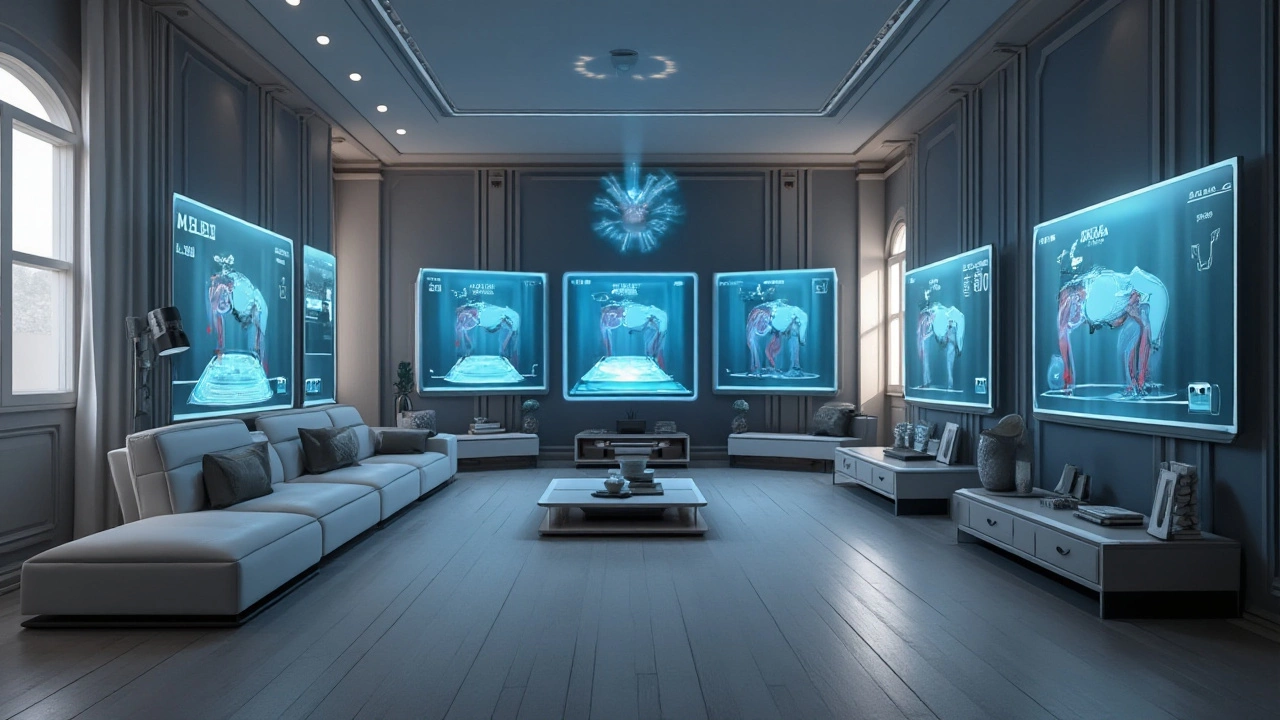
Practical Tips for Setup
Figuring out the best height for your TV stand can feel daunting, but it doesn’t have to be. The goal is to align the center of your television with your eye line to maximize comfort during those binge-watching sessions. The general rule of thumb is to have the center of your screen at eye level when you’re seated. This typically means the screen should be about 42 inches from the floor, but this can vary depending on chair height, TV size, and personal preference.
Before settling on anything, evaluate your seating arrangement carefully. If your sofas are lower or your chairs resemble the plush seating found in a cinema, adjust the television accordingly. Flexibility is key here, as no two rooms are quite the same. A simple trick I often suggest is to sit in your favorite spot and have someone hold up a piece of cardboard where you think the TV should be. You’d be surprised at how this tactile test can help you realize what feels right.
When installing, take a moment to think about the impact of tilting. Adjustable wall mounts allow a great deal of flexibility and are excellent for reducing glare from windows. Just remember: excessively tilting the screen upwards or downwards could strain your neck over time. Creating a viewing experience that feels natural and intuitive is crucial, so don’t shy away from fine-tuning adjustments over time.
Maintaining a clean and organized setup is equally significant in achieving a harmonious space. All those cords, if left unchecked, can turn a sleek setup into a source of stress. Consider investing in cable management solutions such as cord covers or even drilling discreet holes in the back of your TV stand. Design a layout that’s not only tailored to your tech needs but also complements your surrounding decor.
"A TV stand that doubles as storage can be your best friend," says interior designer Jane Tuttle. "It helps avoid clutter and makes the space feel larger and more inviting."
Lighting is another key component that is often neglected but can be a game-changer. Consider adding backlighting or ambient lighting to reduce eyestrain and enhance your viewing pleasure. And remember, this bright or soft lighting should accentuate the space rather than overpower the main show, which is your television.
Television setup doesn’t only revolve around visuals. Sound quality shouldn’t be ignored. If you’re using external speakers, organize them for optimal surround sound. Try positioning two speakers at either side of the television, and if you have a subwoofer, place it near your main seating area for those deep bass notes. Similarly, if you’re dealing with an open-plan space, sound absorption panels can greatly improve acoustics.
A harmonious blend of practical adjustments and aesthetic choices can transform how you experience your home entertainment. Your perfect setup is unique to you—molded by your tastes and the character of your living room. Take the time to get it right, and you’ll find yourself with a setup room that enhances both style and substance.

